 |
A computer graphic investigation of a possible mechanism for the origin of planetary motion Russell Lowke |
| Project Overview |
|
Computer visualizations have been made of the predicted motion of a "prospective planet" ejected from the surface of the sun under the influence of gravitational, electrostatic and magnetic forces. In general, such a planet ends up falling back into the sun, much like a solar flare. However, if a planet is ejected at the suns equator with a velocity appropriate to its mass, and the sun has a very high magnetic field, the planet can attain a circular orbit around the sun, as in planetary motion. Furthermore, the magnetic forces on the electrical charges on the planet are such as to produce planetary spin. The suggestion is that stars in their volatile formative years might produce masses of such eruptions, some giving birth to planets. Research for this theory was formulated by John Lowke, and Fortran77 code to calculate it written by him. The masses of three dimensional numerical data from these calculations are impossible to interpret without the computer visualization of orbital paths. |
| README and Code |
|
| Screen Shots |

|
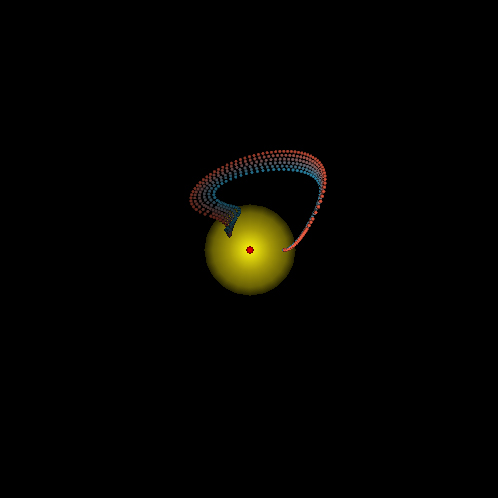 a_nice
a_nice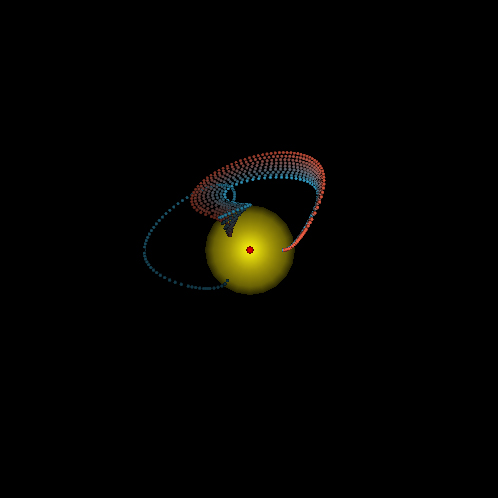 b_1planet
b_1planet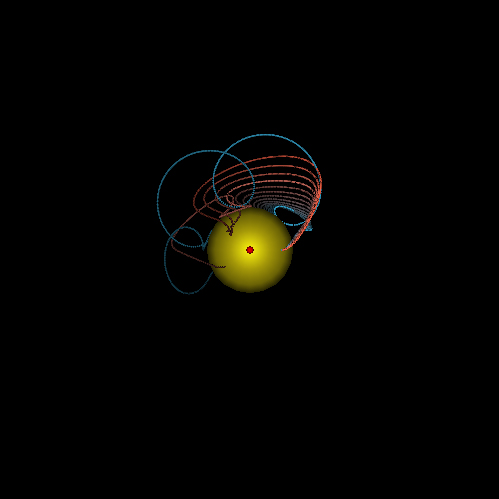 c_many
c_many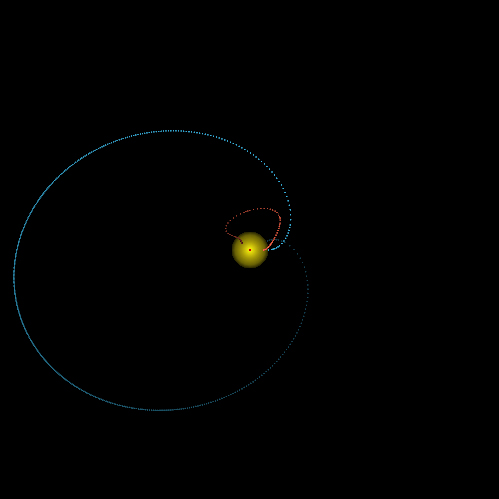 d_equ+45
d_equ+45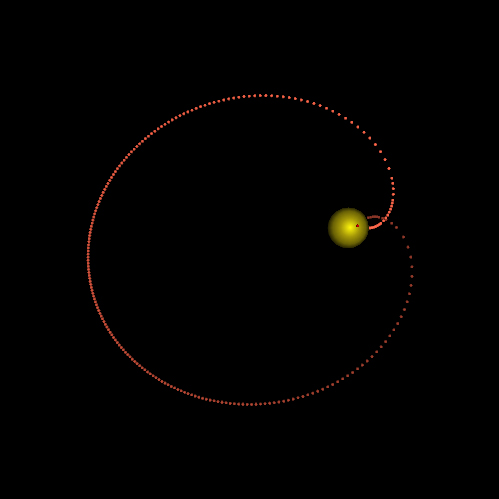 e_crossover
e_crossover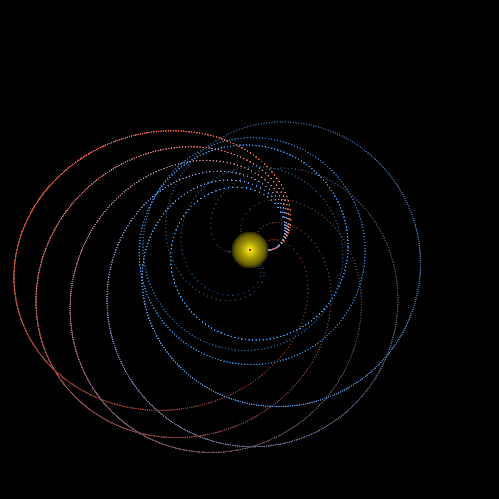 g_many2
g_many2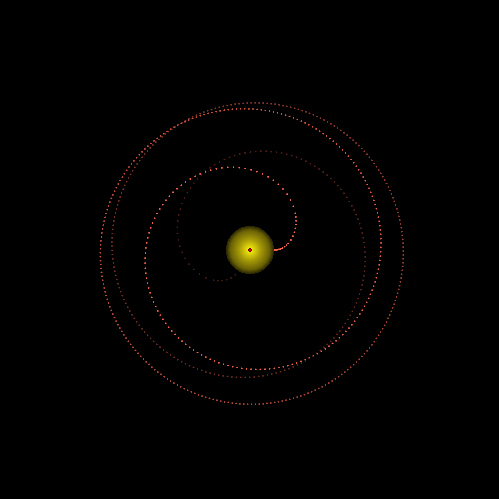 h_orbit
h_orbit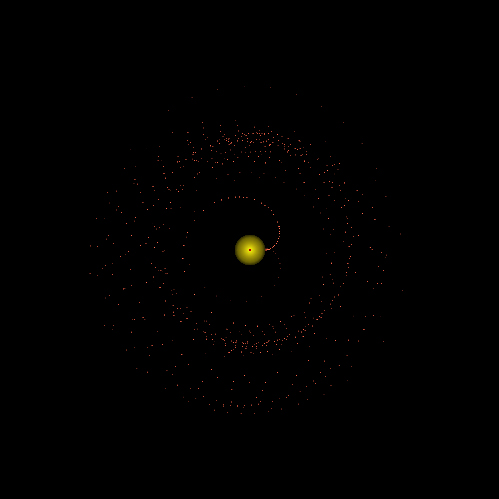 j_galaxy
j_galaxy